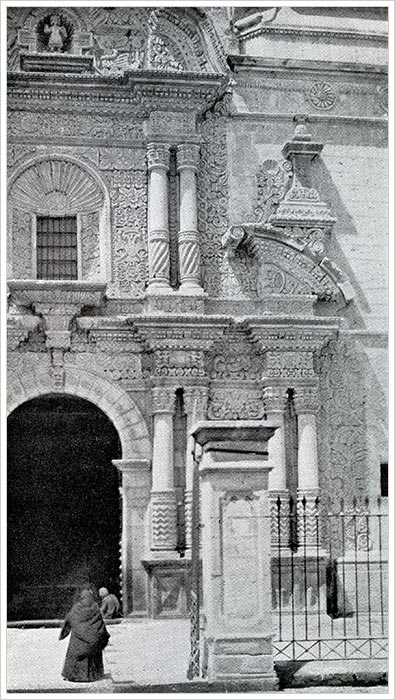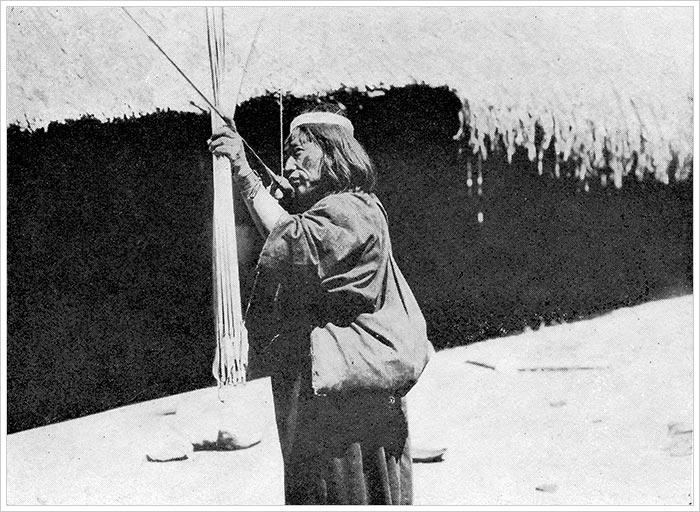Tales of Far Peru, Part 2
Morosini, himself, first went to Jura to see what the baths could do for him, for he had acute dyspepsia. Under the water’s influence his complaint vanished like smoke before the wind, so he decided to stay at Jura and do a bit of prospecting. He was curious to learn what riches lay hidden beneath the mighty peaks that tower up all round. Gold, silver, copper, and tin indications were plentiful, and vast formations of limestone and quartz hinted of emeralds waiting to be won. Ultimately Morosini resolved to make Jura his permanent abode, so he bought some ground off the Peruvian Government and built himself a fine hotel. (The terms on which he secured the ground were very exceptional. In return he engaged not to charge more than 2½ sols per day for a double-bedded room, nor more than 3½ sols where a person wanted a whole room to himself. These charges included early coffee, ten o’clock breakfast and late dinner. Only lunch was extra, so the accommodation was both good and cheap.)
I once went prospecting with Morosini. Though we weren’t out long enough to get very good results, we found indications of gold in paying quantities. On another occasion my companion was Horne, M. M. Penny’s assayer. With him of course I had to take matters more seriously; still, for all that, I enjoyed myself. We used to start off every day, each carrying a bottle of beer, some soda water, native bread and cold meat; and at the end of our expeditions there wasn’t much likely ground within a fifteen-mile radius of Jura, that we had not investigated. I say “We” out of courtesy, for Horne didn’t care for the sweat of nosing around precipices, and so forth. He preferred to sit and smoke and read, while I did the donkey work. I don’t blame him, as I dare say I should have done the same had our positions been reversed. Anyhow he was able to appraise the samples I obtained on the spot.
My idea in looking round was to take time by the forelock, so that if Penny and Minchin went “off song” on tin, and decided to open out in gold and silver between Titicaca and Jura, I might have some data ready to hand. We happened upon no old mines round Jura, but about fifteen miles from the baths we came across an aged Indian, who put me wise as to the situation of several gold propositions, a bit further off in the direction of Arequipa.
This old boy was a miner by trade, and had for years, so he said, worked a mine on his own. I gathered it was of the placer variety, and located about thirty leagues from where he lived. During the three days I stayed at his house, this Indian gave me much valuable information about mining and mining propositions. At his mine, it was so cold all through the winter months, that he and his assistants had to thaw the ground, by building fires on it, before they could get at the gold. But he had evidently done himself a bit of good over the affair, for he owned lots of llamas and farmed some nice breadths of barley and wheat.
Antonio, my old Indian friend, showed me the kind of clothes he wore during his mining operations. They were made of guanaco skin with the fur inside. Underneath he wore garments knitted of llama wool. His boots came more than halfway up his calves, and were not unlike hunting boots. They were very soft and pliable, made of whole thigh pieces of guanaco skin, fur inside. Over these boots Antonio wore sandals, having very thick soles of bullock hide and tied with gut. Vicuña wool stockings completed the outfit. The Indian women round about where Antonio lives are great hands at making socks. Their workmanship is excellent; but beyond that I think they must treat their yarn in some particular way, for the articles they turn out seem to wear much longer than any other sort. Vicuña socks cost 10s. per pair; those made of llama or sheep wool, only 4s. The vicuñas and llamas easily outlast twenty or thirty pairs of European manufacture. I have never seen them offered for sale in large quantities except at Cuzco, Arequipa, or La Paz.



